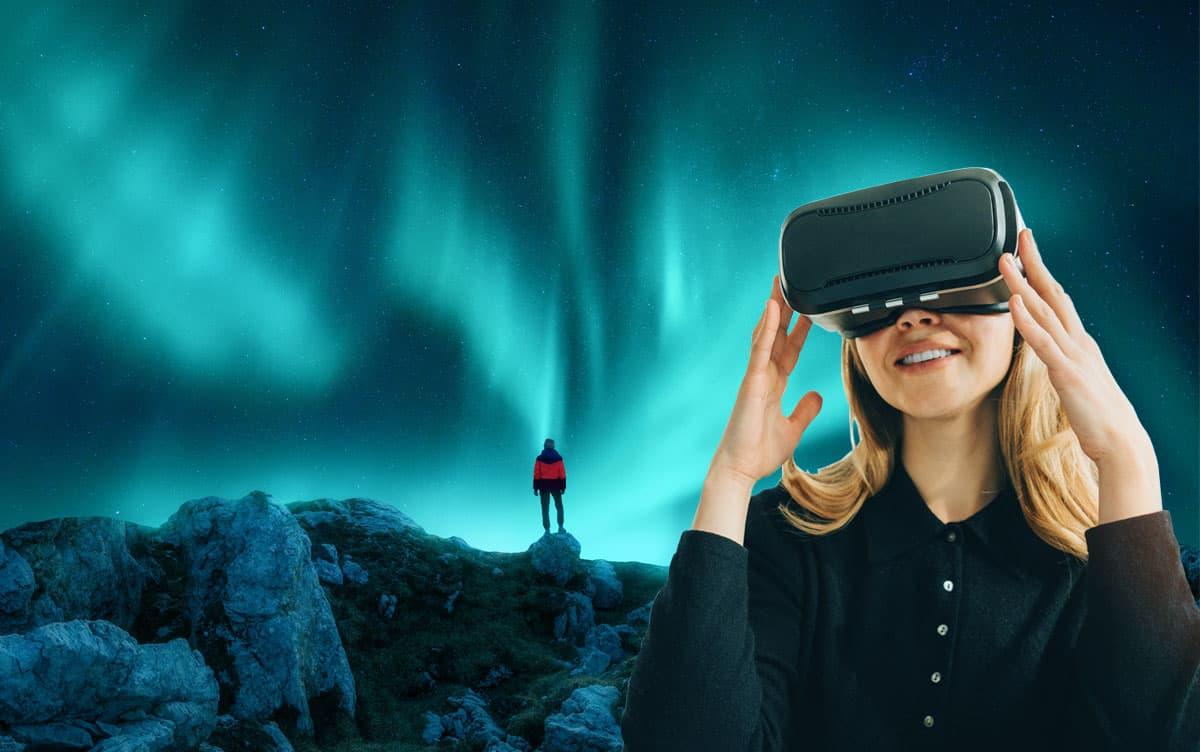Research News
Simulating Cold Sensation without Actual Cooling
 Image by Denis Belitsky, Alex from the Rock/Shutterstock
Image by Denis Belitsky, Alex from the Rock/Shutterstock
The perception of persistent thermal sensations, such as changes in temperature, tends to gradually diminish in intensity as our bodies become accustomed to the temperature. This phenomenon leads to a shift in our perception of temperature when transitioning between different scenes in a virtual environment. Researchers at the University of Tsukuba developed a technology to generate a virtual cold sensation via a non-contact method without physically altering the skin temperature.
Tsukuba, Japan—Our skin plays a key role in perceiving temperature and the surroundings. For instance, we perceive the chill of the outdoors when our cheeks blush with cold, and we sense the onset of spring when our skin warms up gradually. However, getting exposed to the same stimuli repeatedly, makes us accustomed to the stimuli, making it challenging to sense new sensations. This process, known as "temperature acclimatization," can interfere with our ability to gauge temperature changes in a virtual reality (VR) environment while switching scenes.
In this study, the researchers have developed a non-contact technology for simulating a cold sensation that continually generates thermal experiences while maintaining nearly constant skin temperature. This innovative approach leverages human body's natural sensitivity to rapid temperature changes. The technology employs a combination of cold air flow and a light source to instantly switch between a quick cold and a gentle warm stimulus, inducing a cold sensation while maintaining the skin temperature fluctuations close to zero. Evaluation results have demonstrated that this system can provide a virtual cold sensation without any actual change in temperature. Moreover, the researchers have succeeded in replicating a cold sensation of the same intensity as one would experience with continuous skin temperature changes.
This breakthrough technology offers a novel perspective on simulating skin sensations without altering the body's physical state. It has the potential to enable immersive experiences in the world of VR, including the Metaverse, by offering not only instantaneous thermal sensations like a sudden cold breeze but also persistent thermal experiences over extended periods, akin to those encountered during international travel.
###
This work was supported in part by grants from JSPS KAKENHI (JP21H03474, JP21K19778) and in part by JST SPRING (JPMJSP2124).
Original Paper
- Title of original paper:
- Integration of Independent Heat Transfer Mechanisms for Non-Contact Cold Sensation Presentation with Low Residual Heat
- Journal:
- IEEE Transactions on Haptics
- DOI:
- 10.1109/TOH.2023.3324754
Correspondence
Professor KURODA Yoshihiro
Institute of Systems and Information Engineering / Center for Cybernics Research, University of Tsukuba
XU Jiayi
Degree Programs in Systems and Information Engineering, Graduate School of Science and Technology, University of Tsukuba (At the time of this research)
Related Link
Institute of Systems and Information Engineering (in Japanese)










